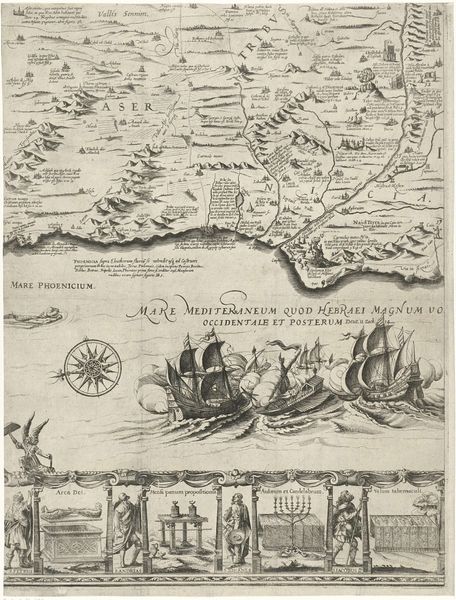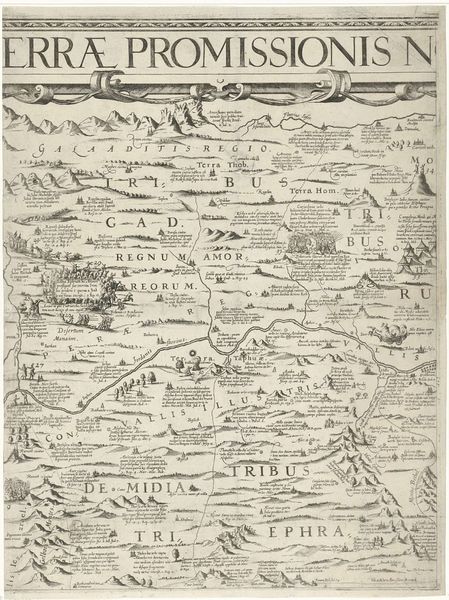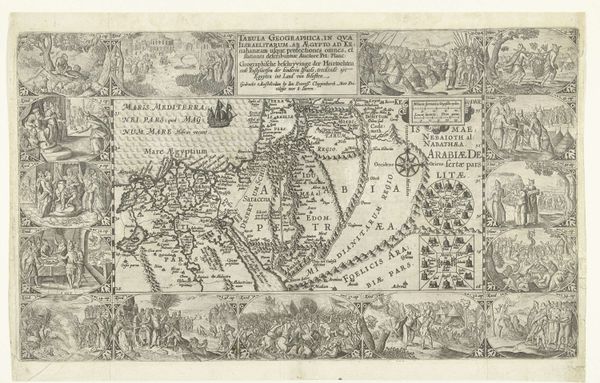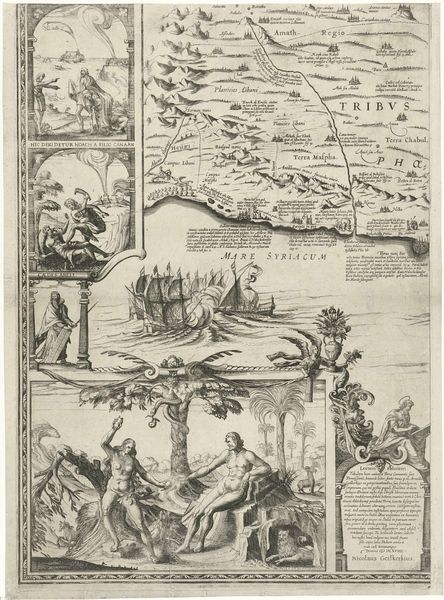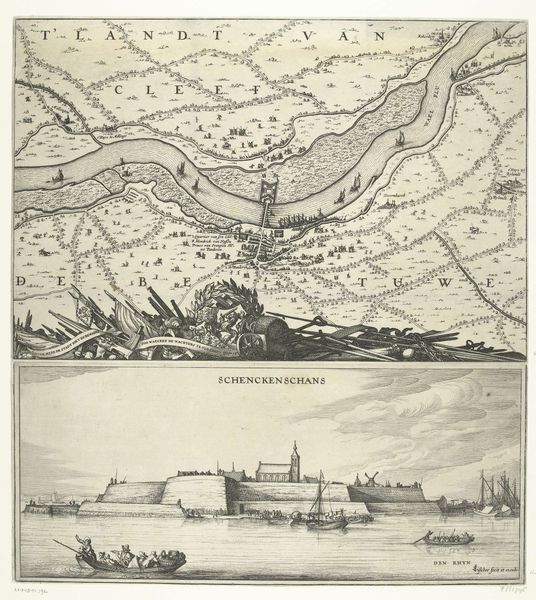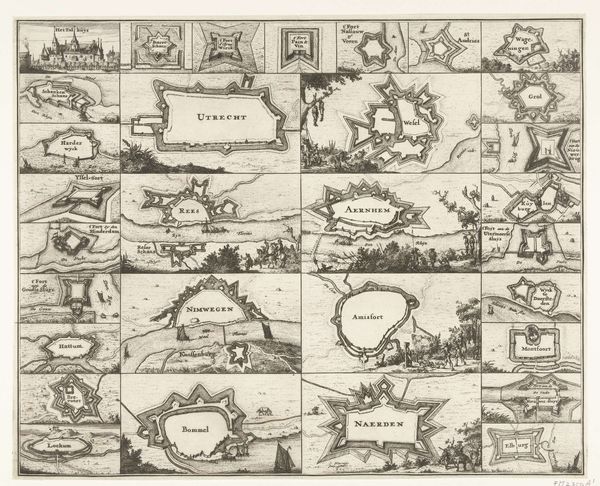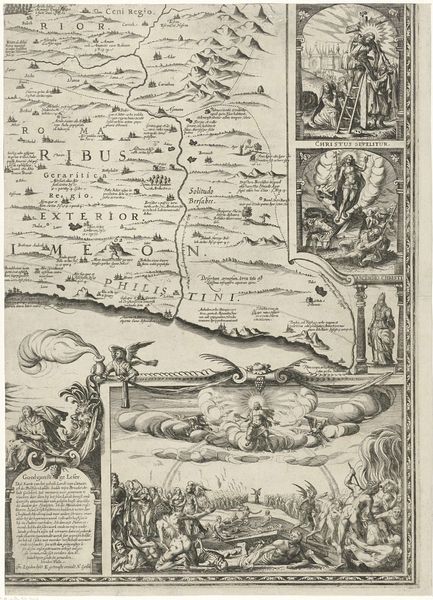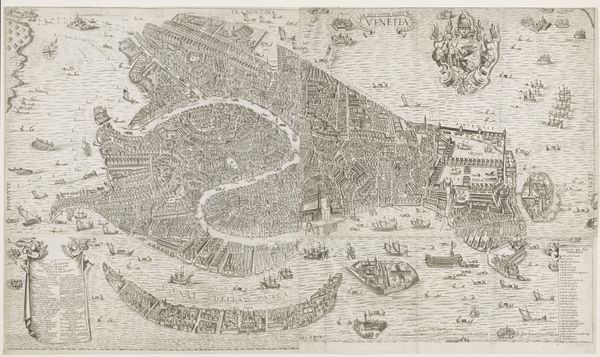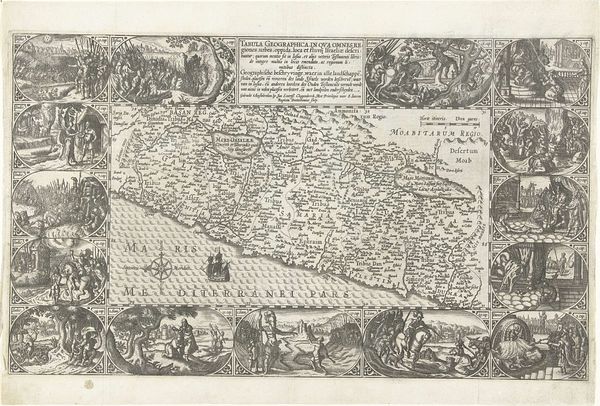
print, engraving
#
baroque
#
mechanical pen drawing
# print
#
pen illustration
#
pen sketch
#
landscape
#
personal sketchbook
#
sketchwork
#
geometric
#
pen-ink sketch
#
line
#
pen work
#
sketchbook drawing
#
islamic-art
#
storyboard and sketchbook work
#
sketchbook art
#
engraving
Dimensions: width 423 mm, height 548 mm
Copyright: Rijks Museum: Open Domain
Curator: Nicolaes van Geelkercken’s "Kaart van Palestina," created in 1621, employs engraving. The stark contrast and precise lines give it an almost scientific feel, despite its clear historical and geographical context. What jumps out at you initially? Editor: Well, it’s interesting that this map includes illustrations of religious figures, what look like sacrificial tools, and boats struggling on the sea. I wonder what it meant for van Geelkercken to combine geography with those elements. How do you interpret this work, especially in terms of its creation? Curator: This print wasn't just about marking locations; it was about constructing a very particular view of Palestine. Think about the process. The engraver meticulously transferring information, likely sourced from explorers' logs, biblical texts, and other maps. Each line, each depicted town, each churning wave of the sea is a conscious decision shaping the viewer's understanding. This print becomes a commodity, traded, sold, and consumed within a very specific market that was eager to know and, to a certain extent, to control the representation of this part of the world. It's a fabrication as much as it is a record. Does that change how you see the image? Editor: Definitely. Seeing it as a product of so many different intentions behind the engraver's choices gives the piece more agency. Were these prints generally for religious purposes, or more for trade and commerce? Curator: That's a blurry line in the 17th century. Knowledge was power, and representing territory, especially the Holy Land, had immense value, both spiritually and commercially. Remember, the act of creating these images—the labor involved in the engraving process, the networks of distribution, and the eventual consumption by viewers—contributes to the social and political power structures of the time. Editor: That's fascinating. I'll definitely look at maps differently now, considering all the steps involved in making them and what all those choices convey. Curator: Precisely. By focusing on the materials and mode of production, the labor that went into creating it, we move past simply identifying the content, and begin to analyze the cultural forces at play.
Comments
No comments
Be the first to comment and join the conversation on the ultimate creative platform.
